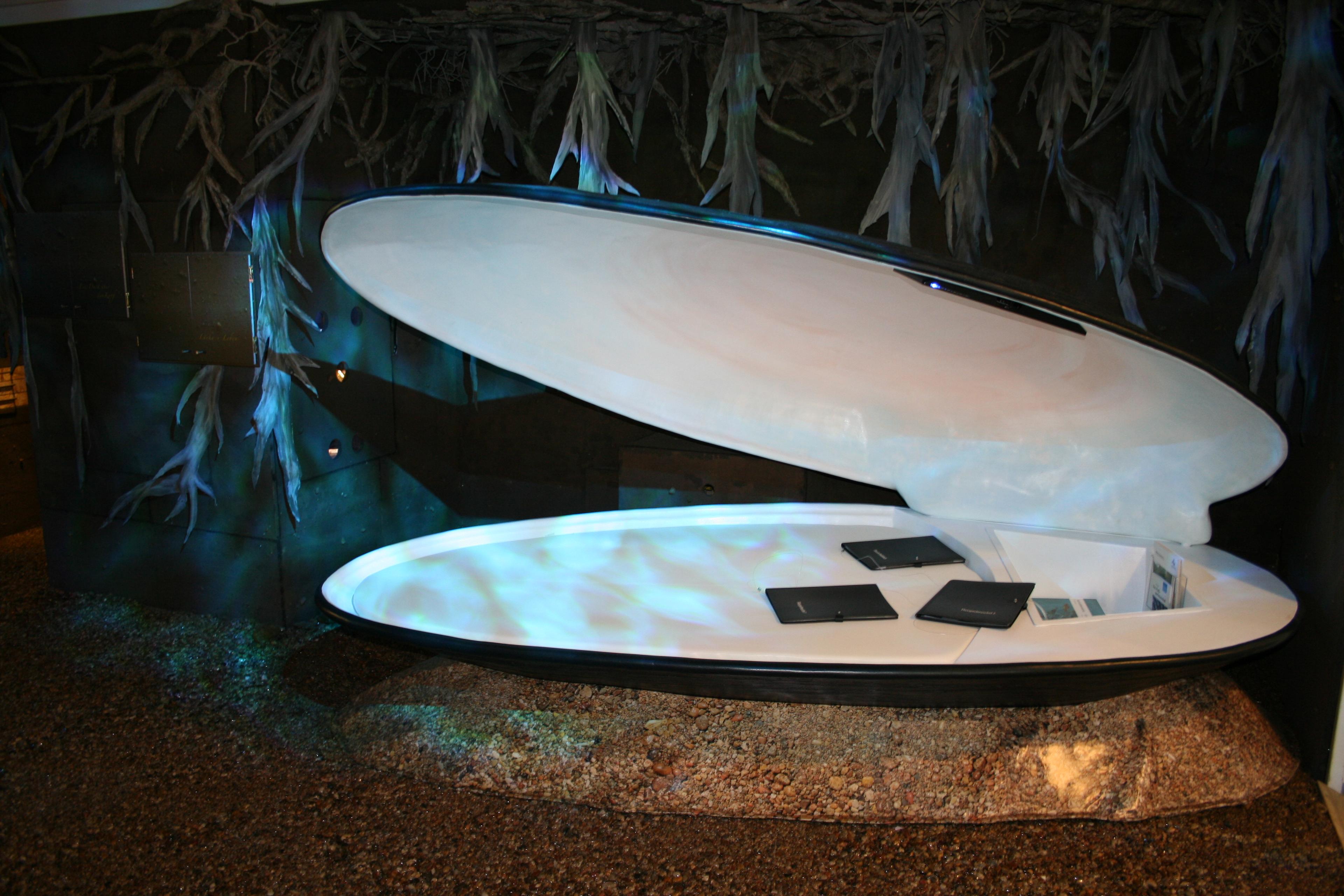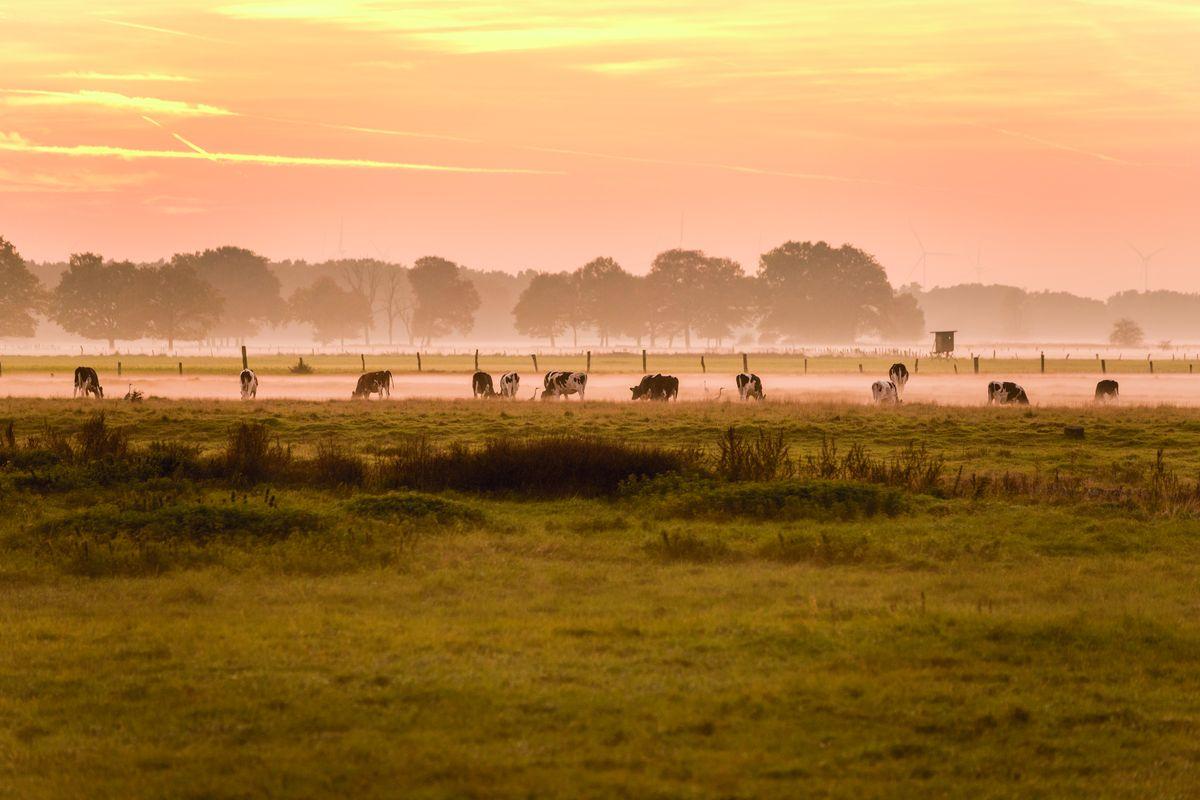
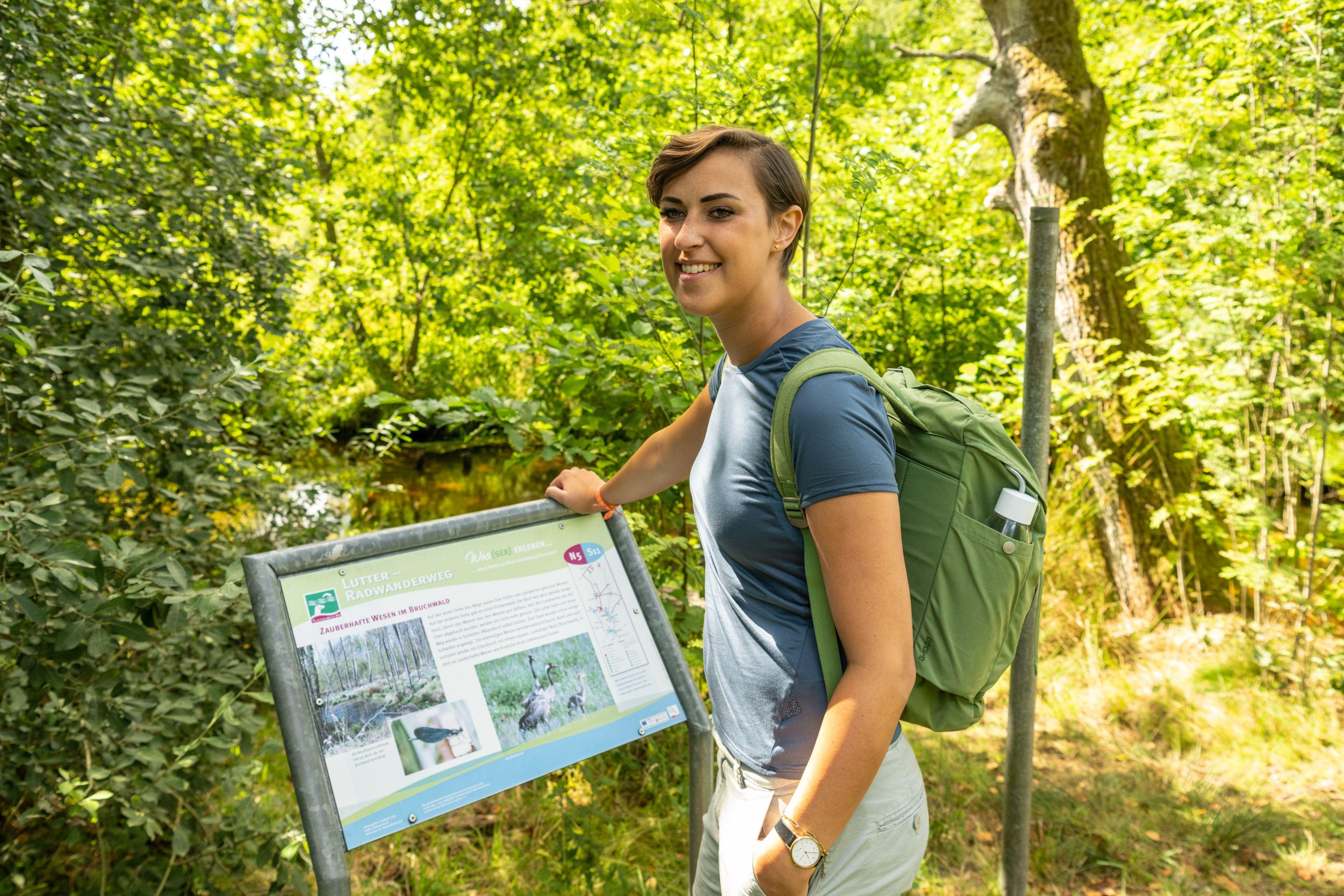
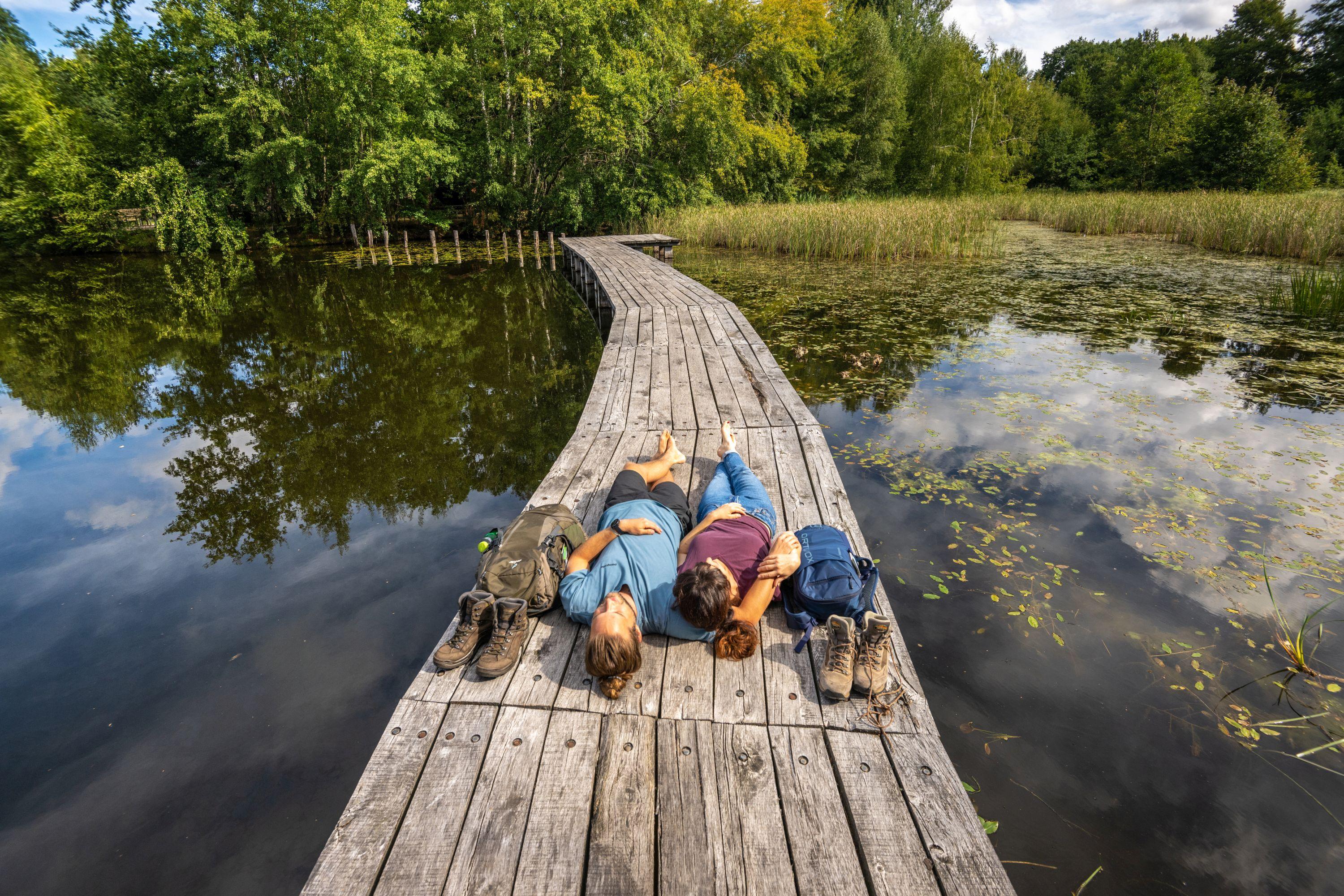


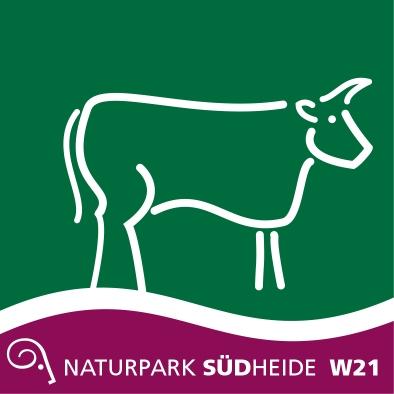
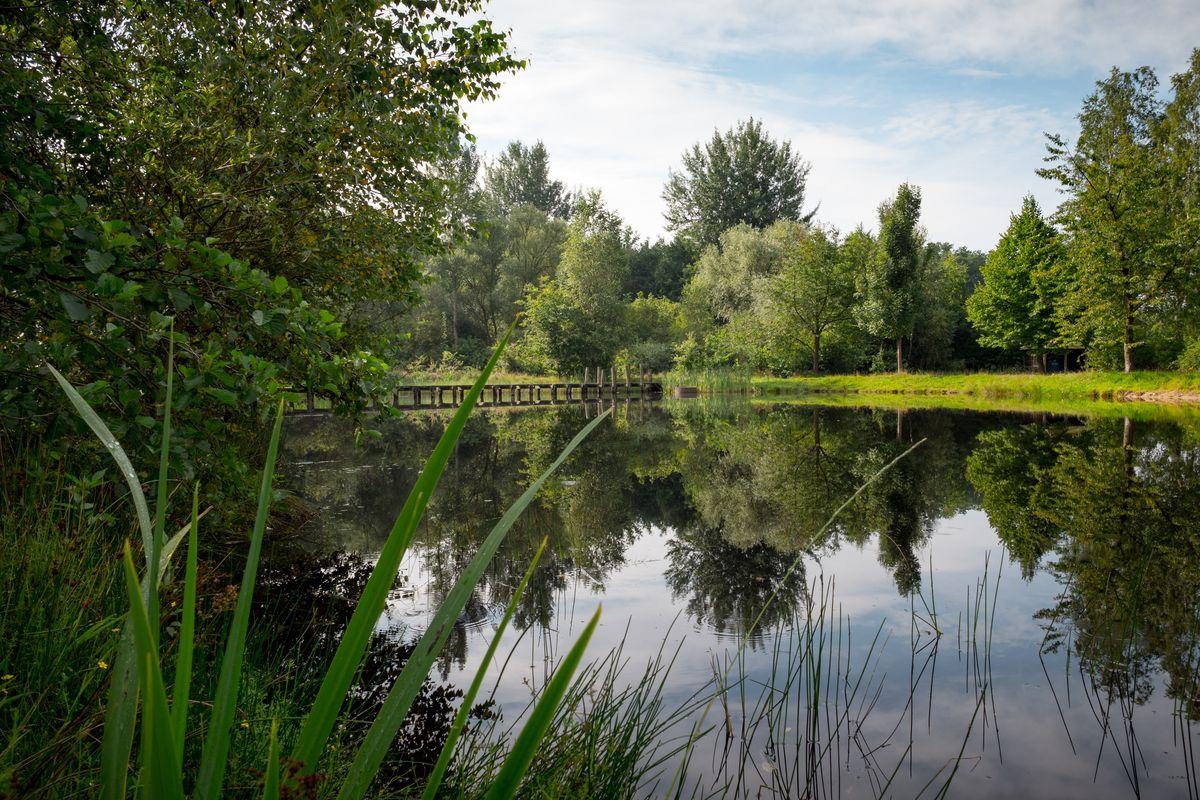
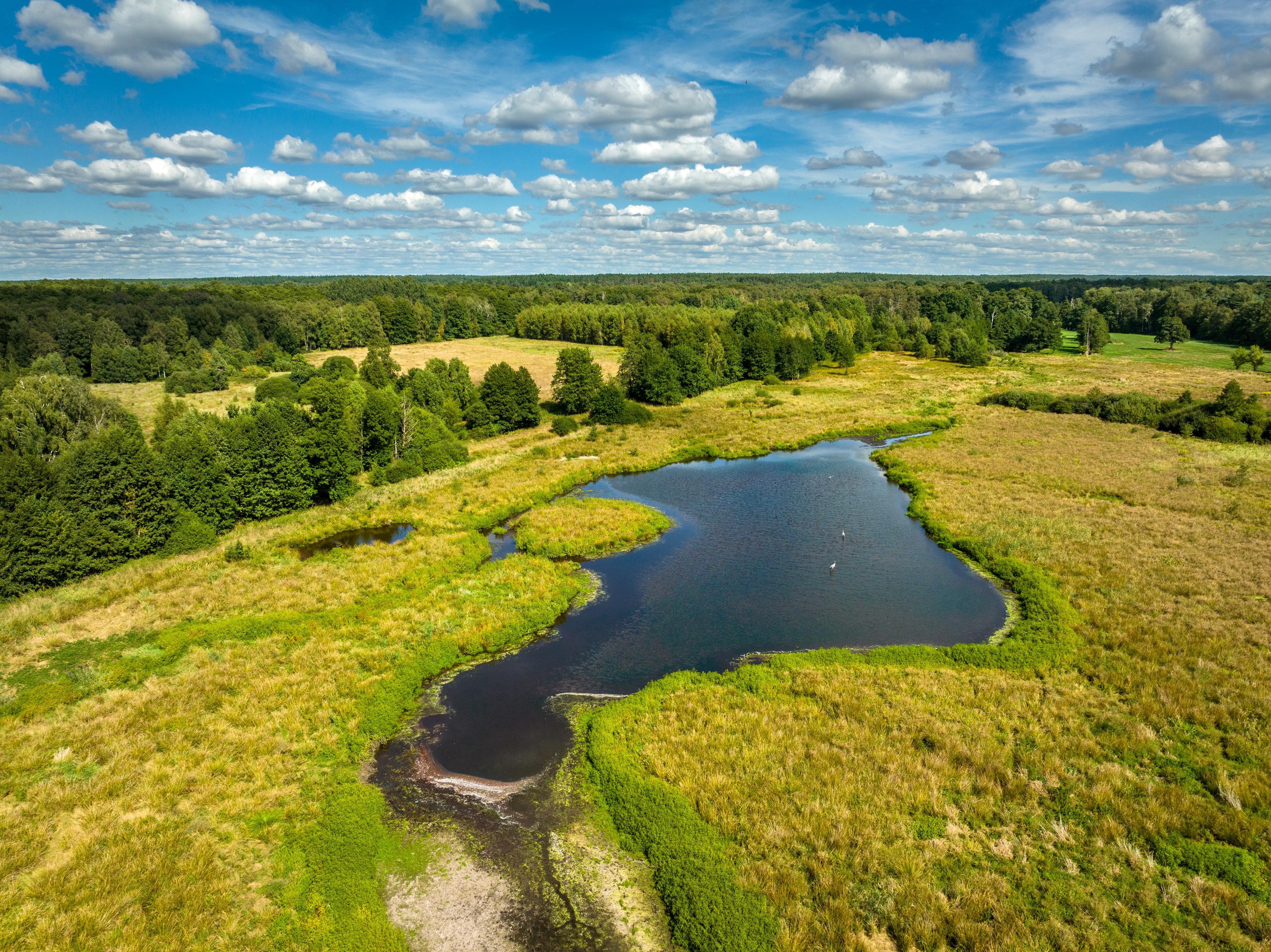
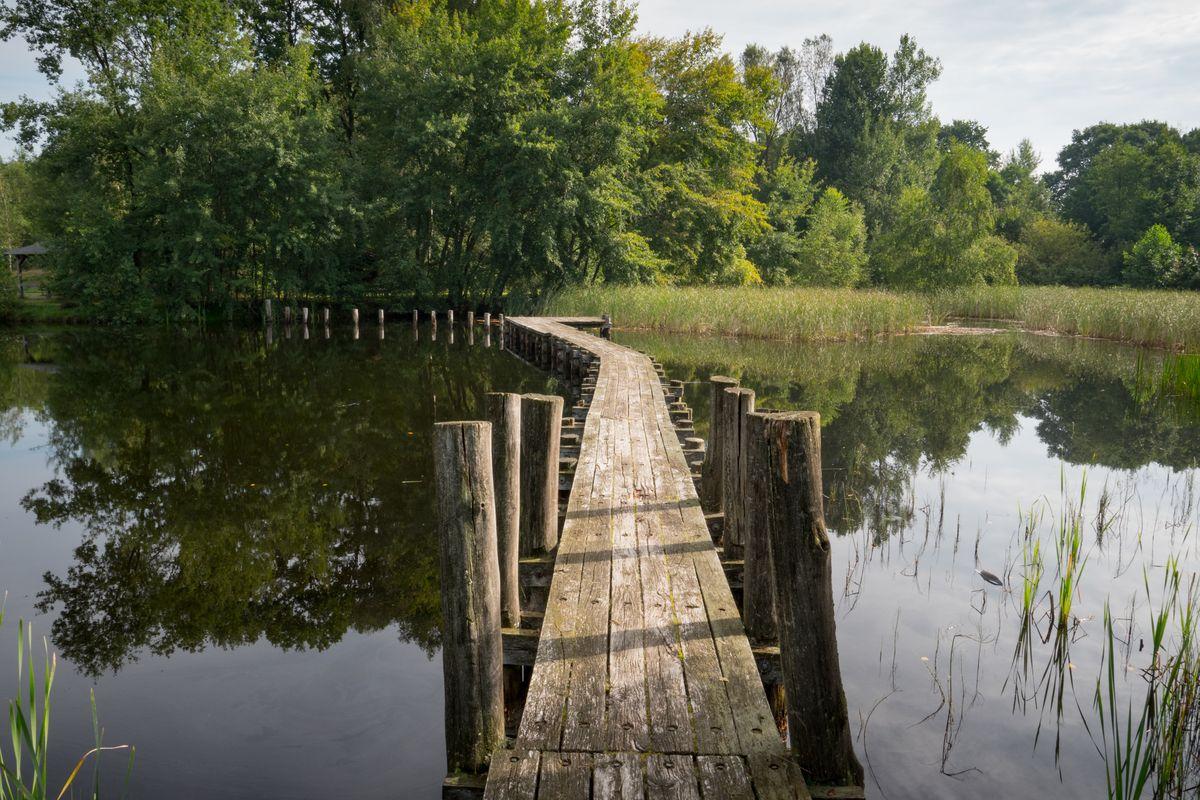
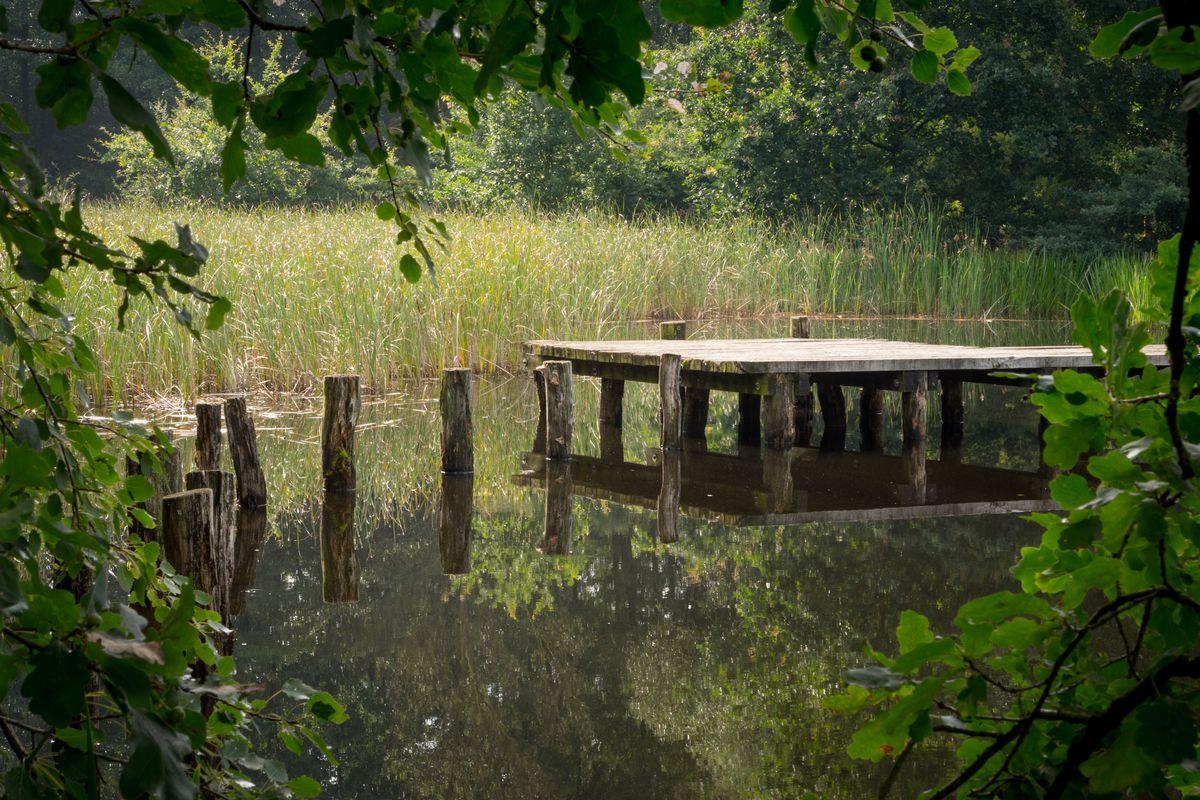
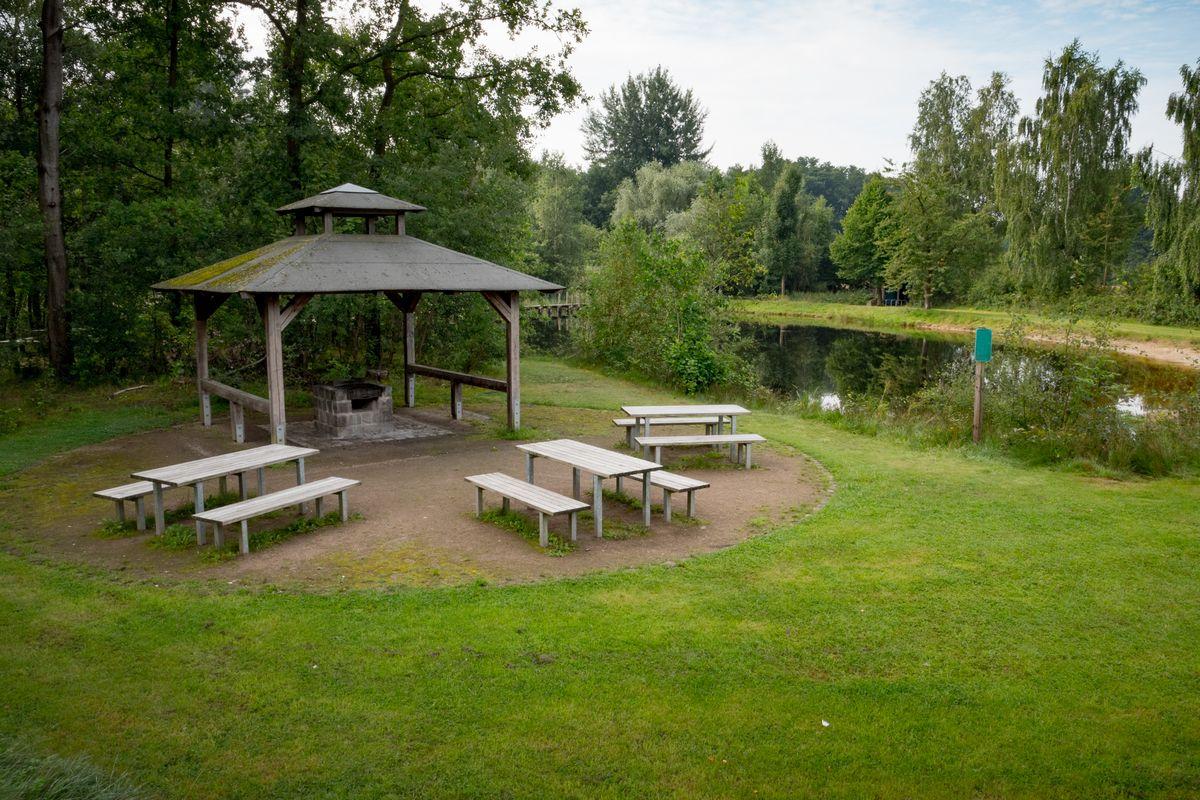
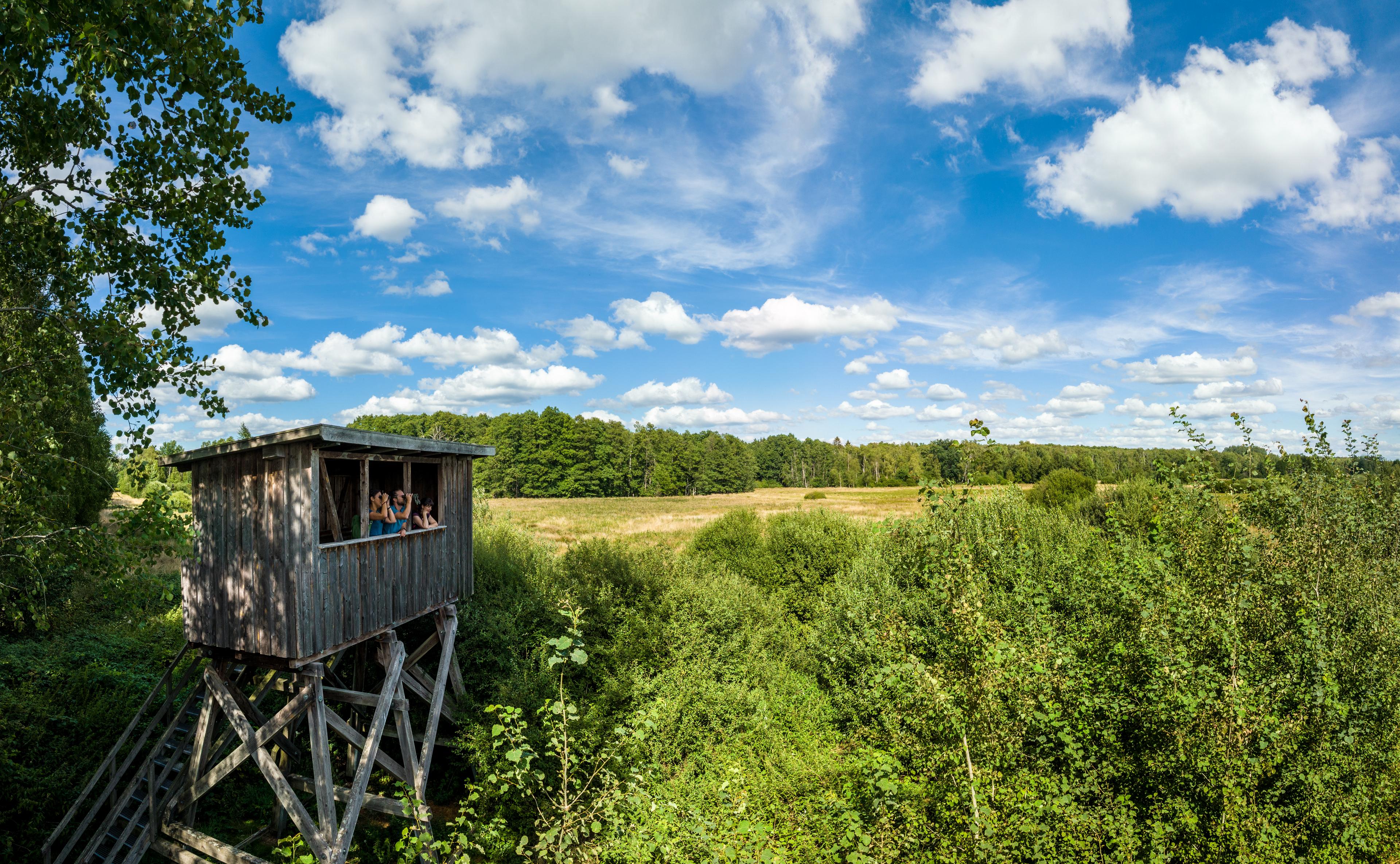
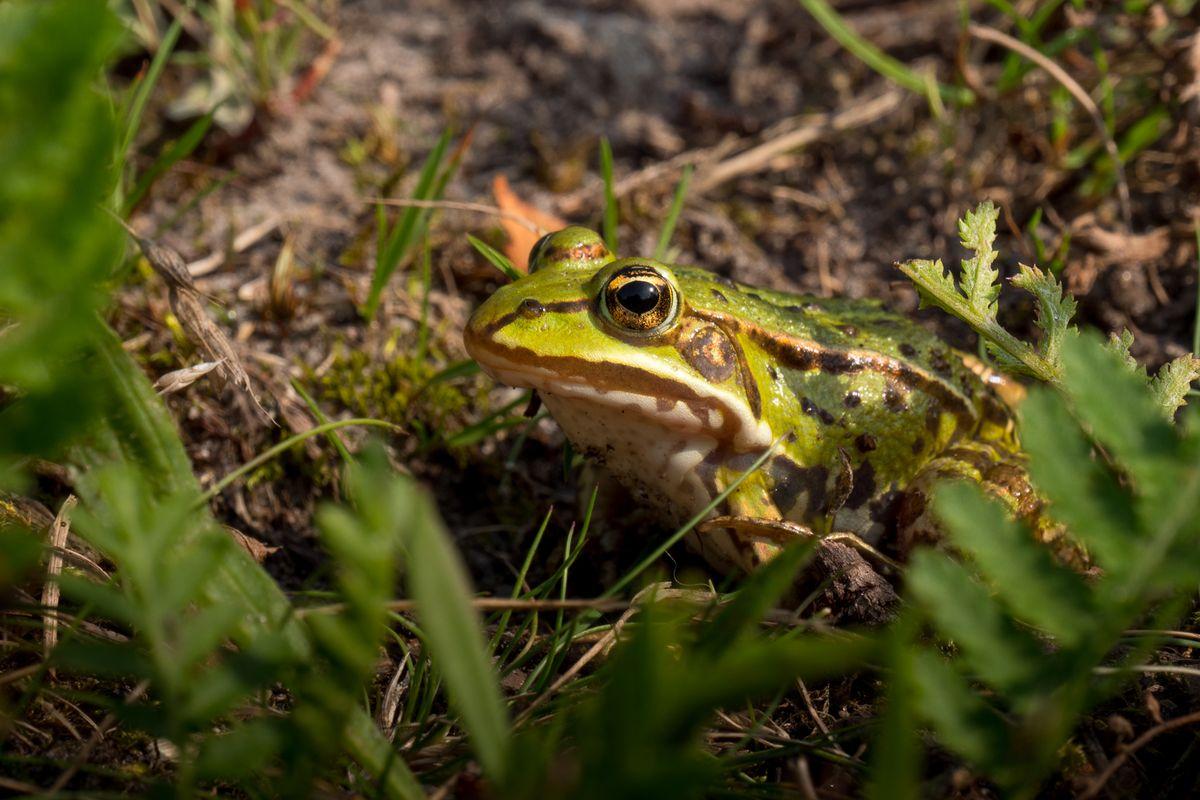
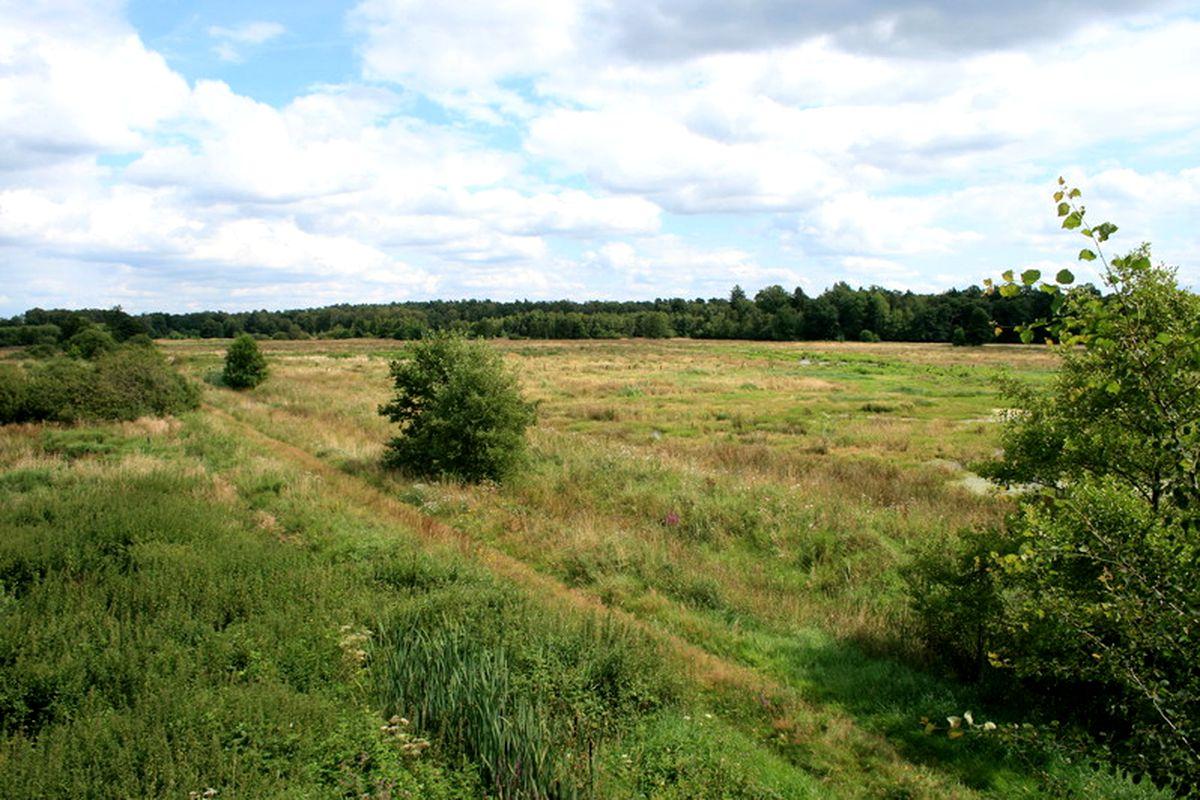
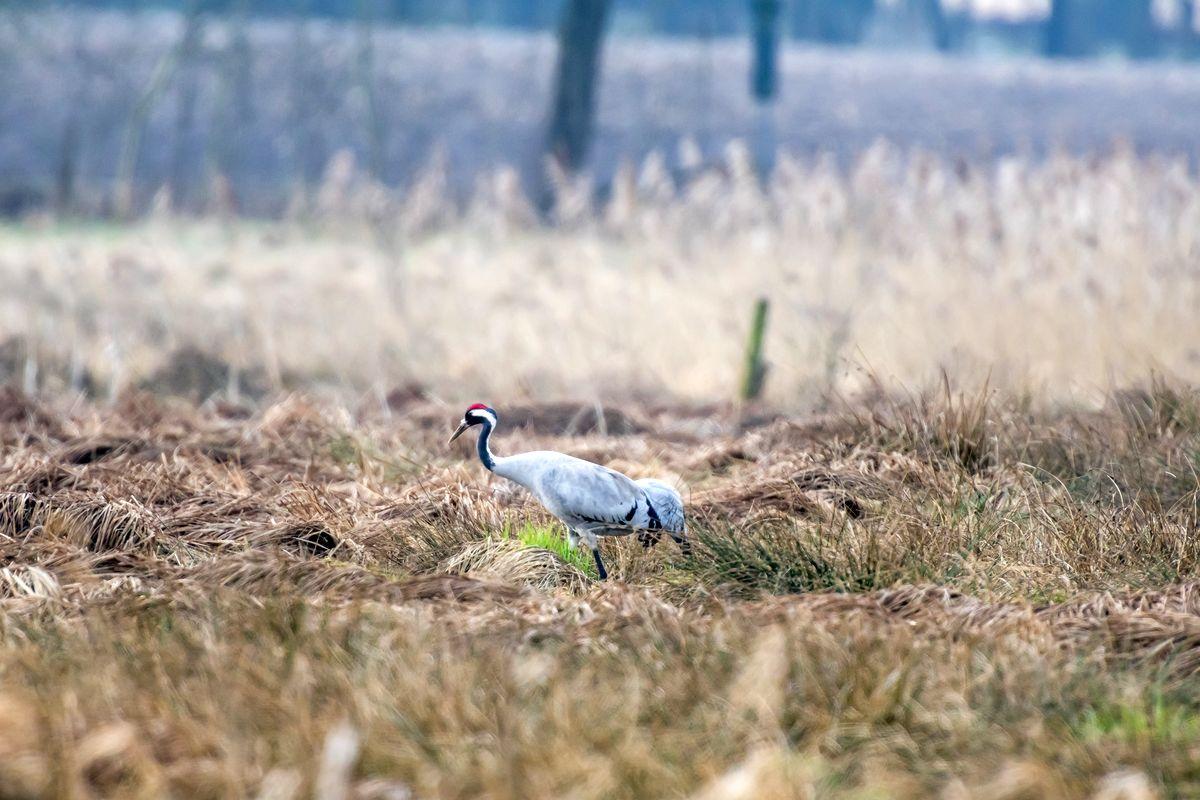
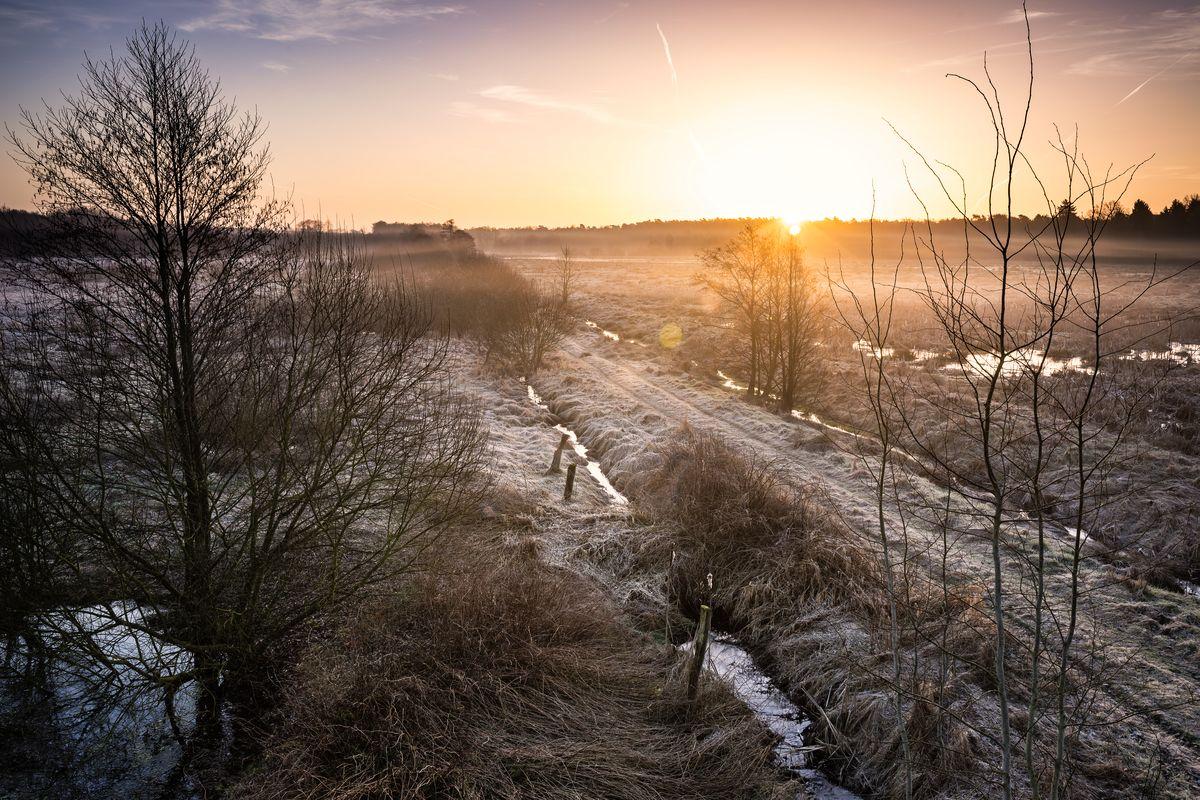
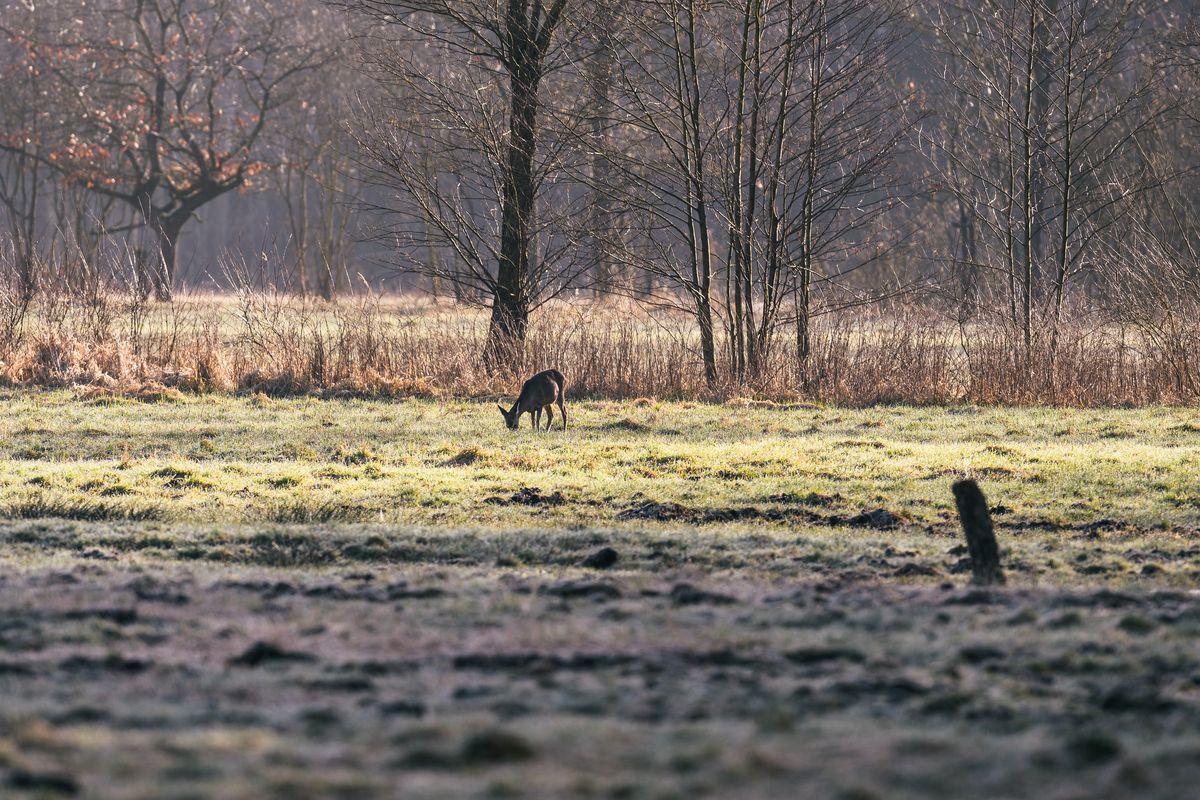
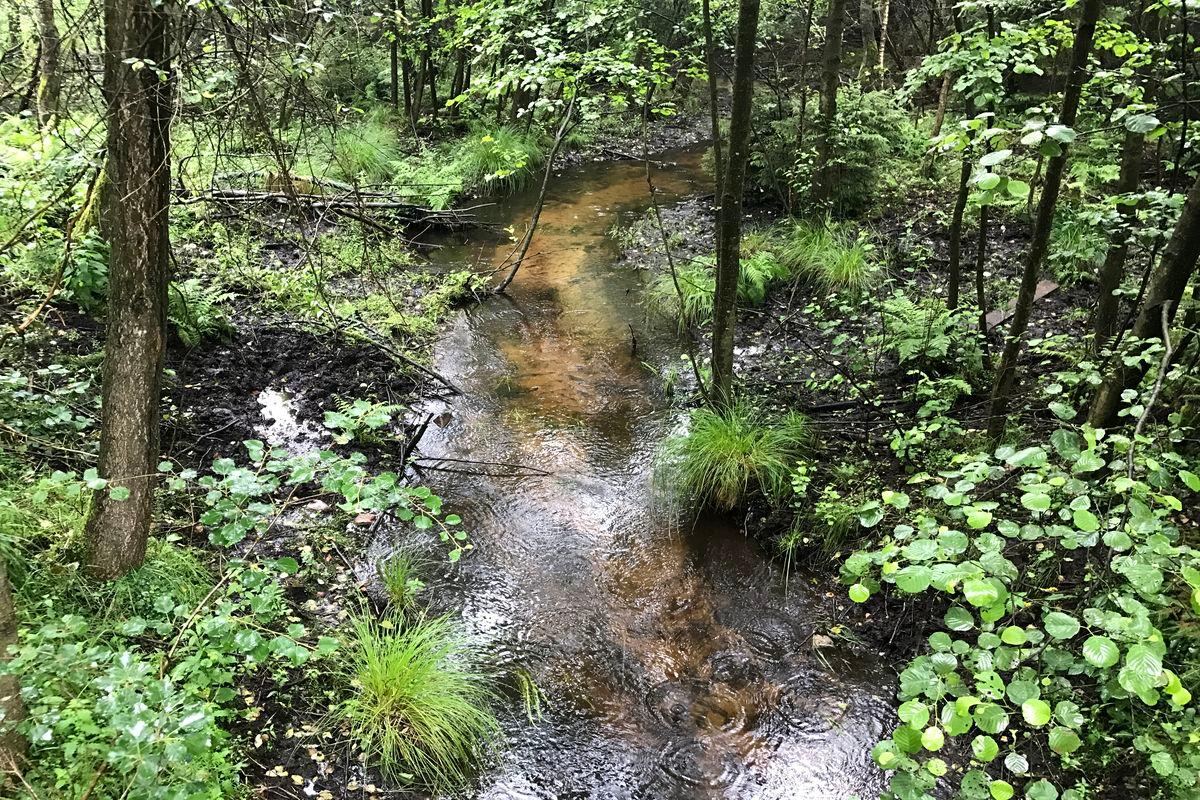
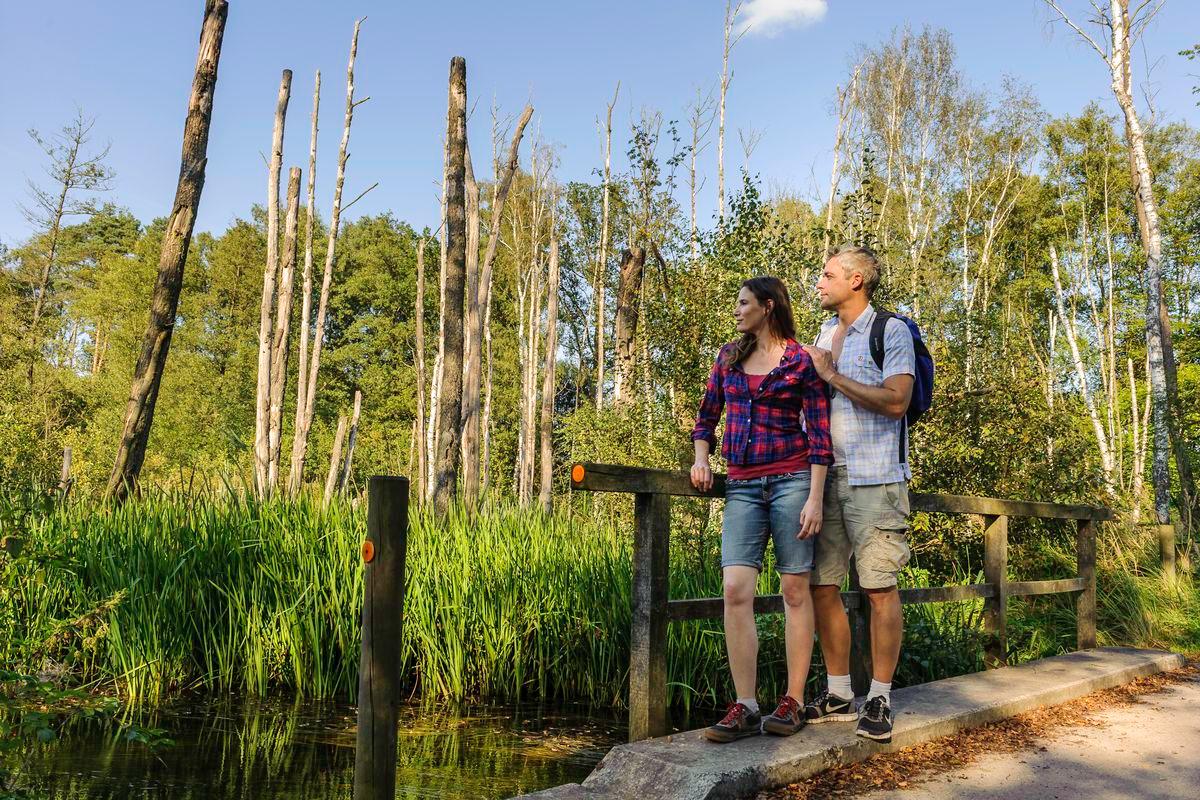
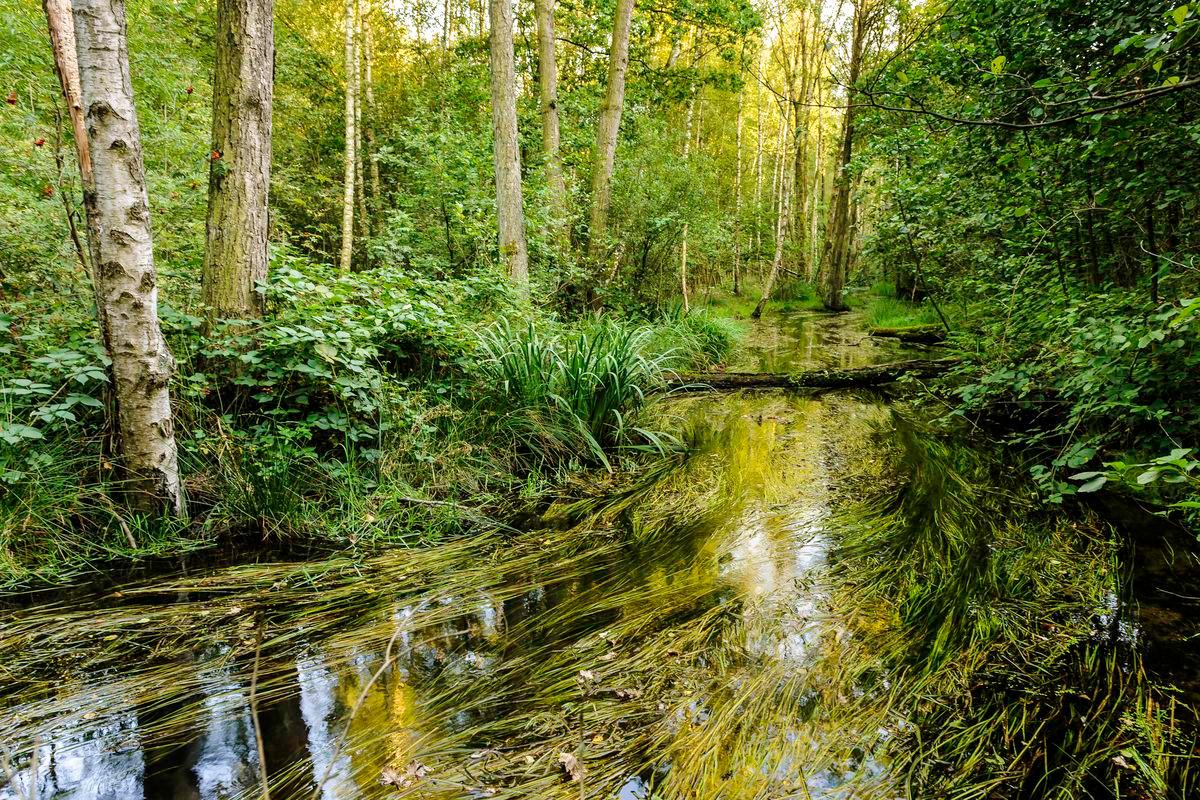
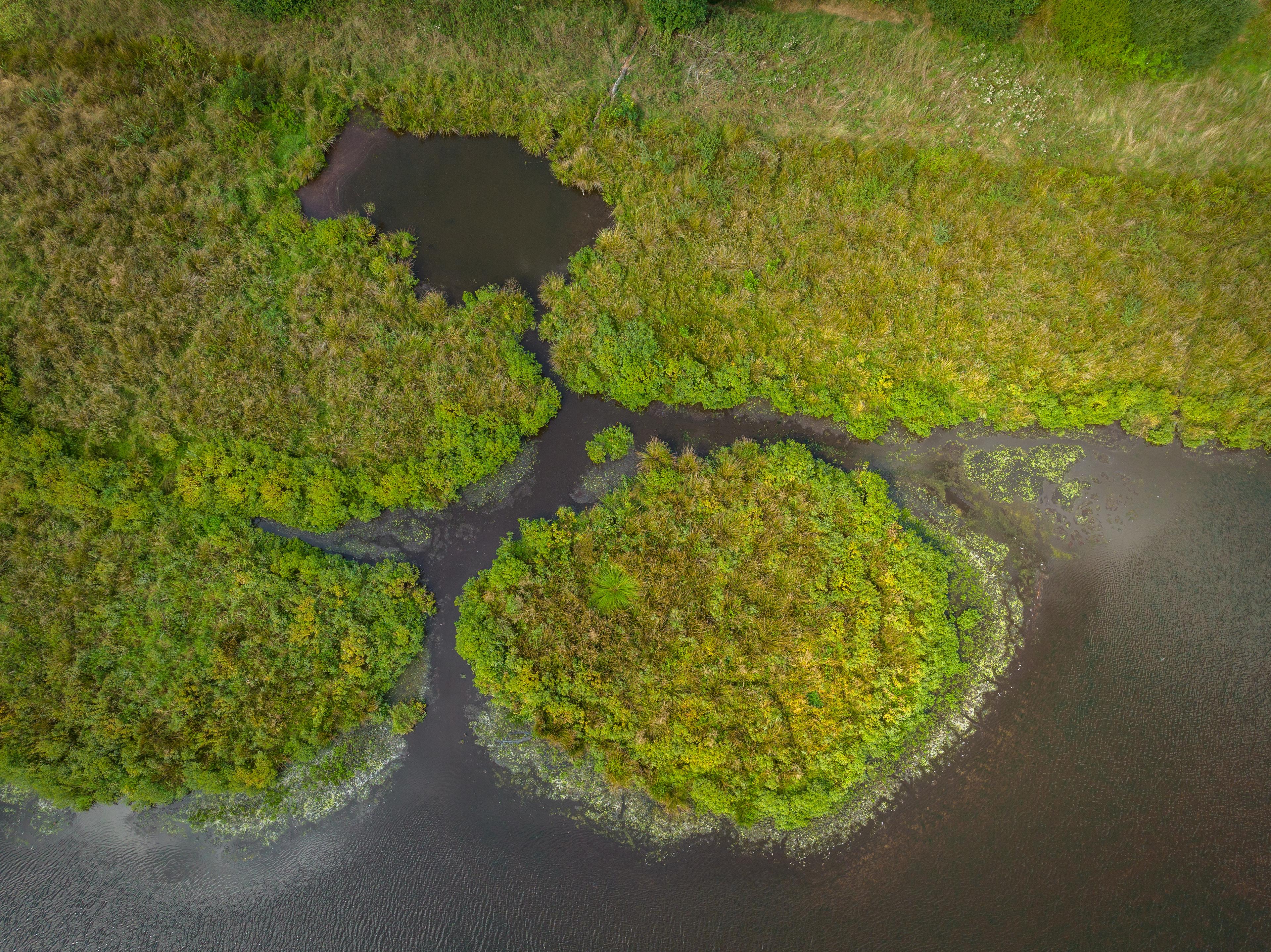
Swampy moorland,
crystal clear heath brooks and black and white cows: The hiking trail W21
"Cows in Half-Mourning" offers plenty of variety for hikers.
Why is the circular route called "Cows in Half-Mourning"?
The circular walk
leads through the fields and smaller forests around Bargfeld and Endeholz. Pasture
farming is still practiced on the grassland of lowland areas in this rural region.
Black and white cows are common. They inspired the well-known writer Arno
Schmidt in his short story "Cows in
Half-Mourning".
What awaits you on the circular walk?
Schmidt described,
among other things, the numerous wetlands in the region around Bargfeld. The
hike follows in the writer’s footsteps while visiting the Postmoor in the east of the village. The moor is located in the catchment area of
the heath brook known as the Lutter. A
large swathe of this area was placed under protection in 2007 due to the high
ecological importance of the watercourse and the adjacent lowlands and offers a
natural habitat for:
• Freshwater pearl
mussel
• Otters
• Black storks
• Sea eagles
• Cranes
Arno Schmidt - author of the short story "Cows in
Halbtrauer"
Arno Schmidt was born
on 18 January 1914 in Hamburg-Hamm. During the Second World War, he spent his
military service in Alsace and Norway working in military offices. Towards the
end of the war, Schmidt was stationed near Bremen. He was taken as a prisoner
of war by the British and then released after about half a year. Initially, he
worked in Cordingen in Lueneburg Heath
as an interpreter for the British army.
After deciding to
become a writer, he initially had to undertake many commissioned works, such as
translating English literature, to make a living. His first publication was the
story "Leviathan or the best of the worlds" from 1949. The Schmidts
moved in 1950 to Rheinhessen and then further to Kastel on the Saar in 1951 and,
finally, to Darmstadt in 1955.
Schmidt hated city
life. It was time to seek the alternative of a quiet and secluded country life.
First, suitable apartments were viewed in the greater Bremen area, but they did
not meet expectations in terms of either space or finance.
Inspiration for "Cows in Half-Mourning" in
Bargfeld
Schmidt lived with
his wife in Bargfeld from 1958 to 1979, where he consciously sought the rural seclusion and tranquility so as
to work undisturbed.
In October 1958, Arno
Schmidt and his wife Alice visited a house in Bargfeld that acquaintances had
told them was up for sale. The first impressions were jotted down in the "
Bargfeld File". In it, Schmidt described the room layout and the fabric of
the building. But he also devoted himself to the village character and the
landscape: "The road itself comes to an end in the village, after which
there is only moor and barren heath; so no through traffic; absolute silence
guaranteed (and tested by two overnight stays); school at the other end of
town, therefore negligible as a source of noise. Rambling parkland interspersed
with forests. Moist lowlands of the most magnificent marsh character; to the
northeast so-called "wild moors", i.e. the kind that hikers can sink into
without attracting attention (tank-proof!). In this direction you can go 50 km
without seeing a single house! Heath areas
interspersed with juniper. Top-quality moon, fog and rain; no taste slurry discernible
in the drinking water, not even with the evillest intent."
Literary monument for Bargfeld
After more than six
years of work, the main work of Arno Schmidt was published in 1970, the largest
and heaviest (over ten kilograms) book of German literary history with 1334
pages in A3 format. Village life and the effect of the surrounding landscape played
a major role in the stories of "Bottom’s Dream". Thus, it is a literary
monument to Bargfeld, even if the name of the village is not explicitly
mentioned anywhere.
During his time in Südheide, Schmidt published more works and received awards for his
literary work. After a heart attack in 1972, he was unable to attend the presentation
of his last personal award and had to be represented by his wife.
Arno Schmidt died on
June 3, 1979 at the Celle hospital as a result of a stroke at the age of 65.
The Arno Schmidt Foundation, founded by his wife and based in Bargfeld, manages
the literary estate of the well-known writer.
The most important features of the tour in brief
• Following the
footsteps of writer Arno Schmidt
• Lookout tower on
Postmoor: observation of rare bird species
• Nature reserve
around the Lutter heath brook
Parking in an
idyllic location directly next to a fish pond

